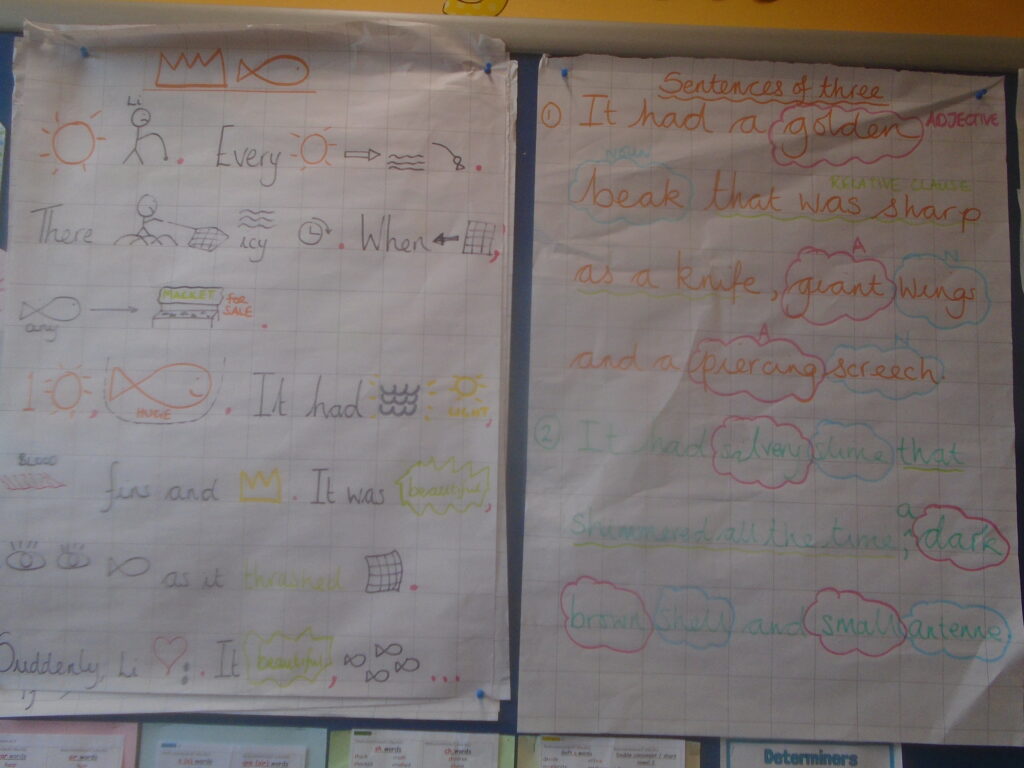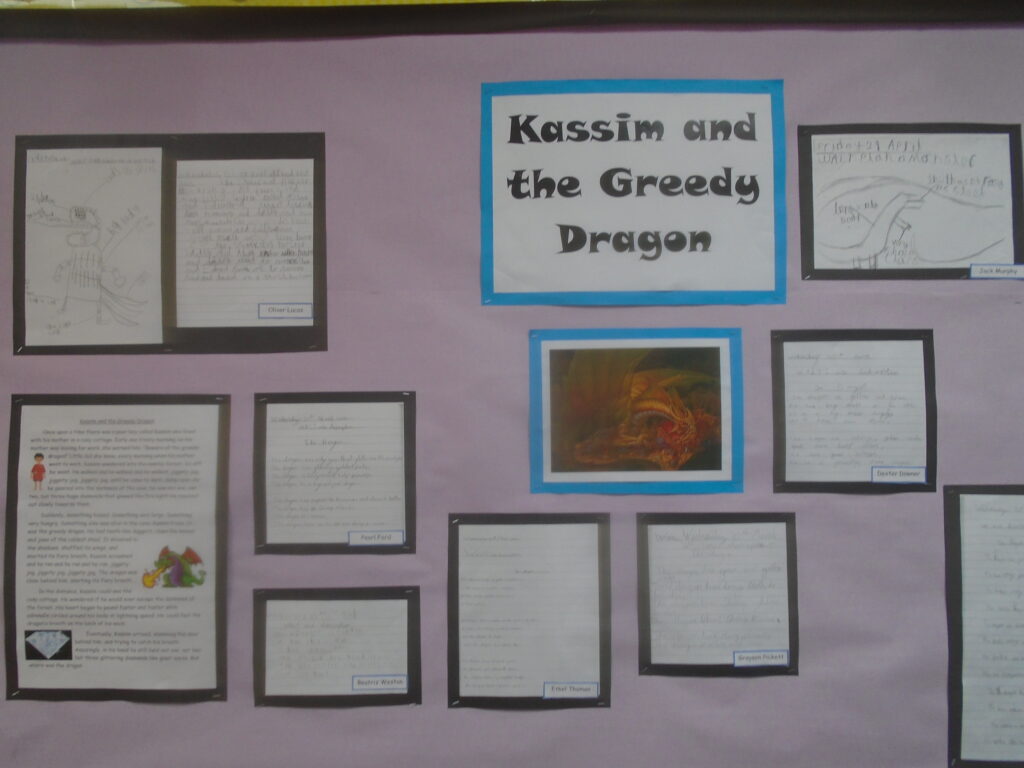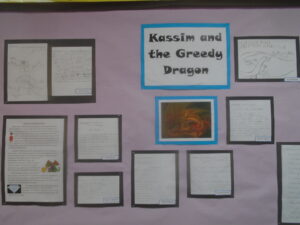Writing


Implementation
The core concepts of writing at Stratford-sub-Castle Primary School are:
- TRANSCRIPTION: writing down ideas fluently, spelling quickly and accurately through knowing the relationship between sounds and letters (phonics) and understanding the morphology (word structure) and orthography (spelling structure) of words
- COMPOSITION: articulating and communicating ideas, and then organising them coherently for a reader. This requires clarity, awareness of the audience, purpose and context, and an increasingly wide knowledge of vocabulary and grammar.
Starting with mark making and writing co-operatively with the teacher, we intend for our pupils to write independently, in many forms by the time they leave. Creative writing of stories and poems, reporting, description, letter writing, diaries, summarising and note-making are some of the forms taught in conjunction with structure, grammar, spelling, punctuation and presentation. (see Writing Progression)
Talk for Writing
We use Pie Corbett’s ‘Talk for Writing’ approach, which enables children to internalise the language of writing and effectively imitate it, writing from concrete experience and with confidence and enthusiasm. Exposure to high-quality stories and the consistent nature of the method gives each child a structure to work within when penning their own stories. The structural elements of storytelling that Talk for Writing develops allows the pupils to become more confident in incorporating their own ideas, exciting vocabulary and extending their narrative writing.
We implement ‘Talk for Writing’ in a consistent and systematic manner. Teaching and building the skills of writing across all cohorts. This also means that pupils know what to expect when they change classes. Writing is assessed consistently throughout the year, through Cold and Hot Writes to begin and end each unit of writing. Assessments identify what will be explicitly taught in grammar and text type sessions. Interventions on specific areas of weakness are carried out by the class teacher or teaching assistant.
To support the teaching of new and adventurous vocabulary, each class has a Word of the Week, exploring the meaning, etymology and use of the word. These words are explored not just in English, but across the curriculum.
Around the school, there are displays of writing to encourage pride in work, give a purpose and audience and to show that work is valued. Writing skills are reinforced in cross-curricular work.
Grammar, punctuation and spelling
These skills are all taught in focussed lessons and reinforced throughout the year. Any areas of weakness that are identified as a result of independent writing or the Hot or Cold tasks, are taught as part of the next modelled text, in focused GPS sessions or during grammar starters. Pupils are provided with weekly spelling lists with words to practise throughout the week.
In KS2, we use the scheme Spelling Made Easy to learn, practise and apply spelling patterns. Pupils are given a set of spellings with a given pattern to learn throughout the week. They apply these spellings through a weekly set dictation. We do not expect children just to go through the motions of learning their spellings, but to actually take responsibility for their learning and to extend their spelling skills by making effort to learn new words.
Here is a list of top tips to help your child learn their spellings – please see our Spelling techniques leaflet.
Handwriting
At Stratford-sub-Castle Primary School, we are committed to enabling pupils to achieve a high standard of handwriting and presentation of written work, through the use of effective and efficient pen control, good concentration, mark-making and writing starting on the line. The school has adopted the online scheme Letter Join and children are taught letter formation through a progression of letter families. Please see our Handwriting Policy for further information.
In Reception, pupils are taught correct letter formation from the beginning of the year. We aim for pupils to use start joining their handwriting in Year 2, ensuring their letter formation is clear and correct before doing so. Pupils are encouraged to choose their own writing implement in the upper school, where appropriate. By the time they leave, pupils should be able to write fluently, legibly and at an appropriate speed using a cursive handwriting style.




